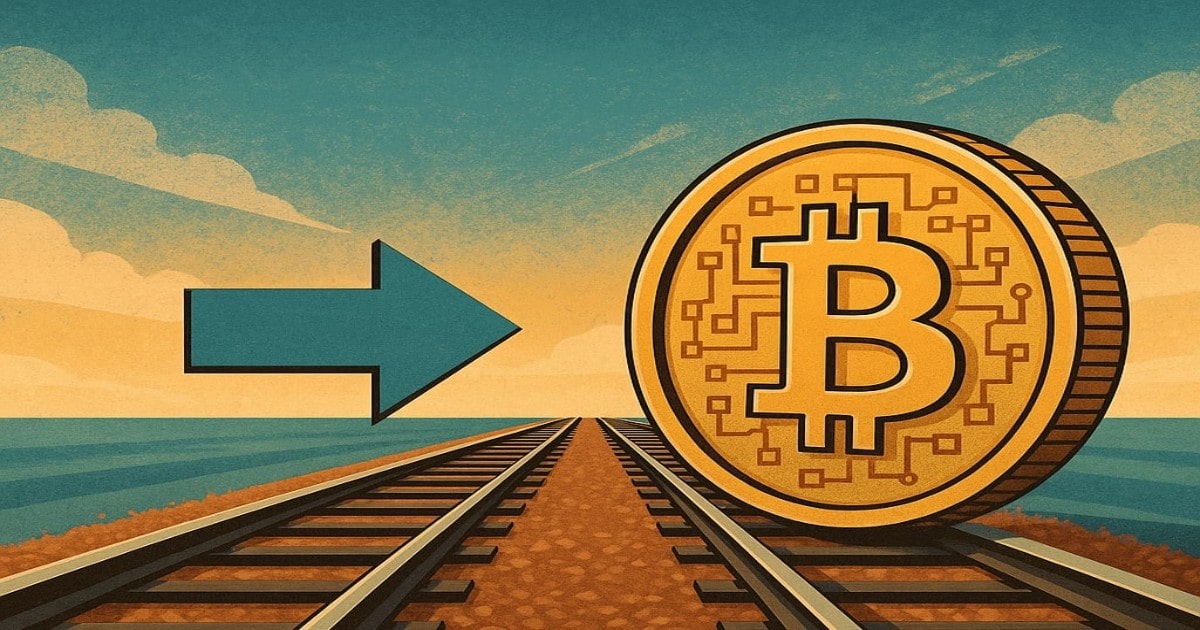FedNow's 1,300-Bank Rail vs $224 B Stablecoins: Is a Dual-Dollar Payment System Next for the U.S.?
Khushi V Rangdhol Jul 09, 2025 03:59
The U.S. is set for a "dual-rail dollar" system, with FedNow providing instant bank payments and stablecoins like USDC and PYUSD gaining traction. As legislation advances, these two dollar rails could coexist, enhancing payment options while regulators ensure interoperability and security. By 2026, consumers might seamlessly use both systems for everyday transactions.

Two Rails, One Greenback
From the Federal Reserve’s perspective, instant payments already exist. Almost two years after launch, the FedNow Service counts “nearly 1,300” participating financial institutions—up from 35 on day one—and is clearing millions of sub-$100 consumer and payroll transactions in real time. Yet outside that closed network, dollar-pegged stablecoins—chiefly USDC, USDT and PayPal’s PYUSD—have swollen to a market-cap of $224 billion, up 32 percent in just six months. With Washington finally advancing bespoke legislation for both systems, payments lawyers are asking a once-heretical question: Will Americans soon move money on two parallel, federally blessed dollar rails—one run by the Fed, the other by blockchains?
Rail #1: FedNow’s Quick Climb
According to FXC Intelligence, FedNow surpassed 1,200 live banks by January 2025, eclipsing the private RTP network and bringing real-time settlement to roughly one-quarter of U.S. depository institutions. Fed officials say 68 percent of community banks intend to join within the next year, helped by application-programming interfaces (APIs) scheduled for release in Q4 2025 that will let fintechs plug directly into the service.
For consumers the pitch is familiar—instant paychecks, bill payments that post on weekends, and corporate disbursements that beat the three-day ACH lag. “Our goal is universal reach, not tokenization,” FedNow executive Nick Stanescu told an anniversary Q & A last week.
Rail #2: Stablecoins Go Mainstream
If FedNow is the public rail, 2025 is the year the private rail got a rulebook. In June the Senate passed the GENIUS Act, the most detailed federal framework yet for “payment stablecoins,” calling for one-to-one reserve backing, monthly attestation and Federal Reserve supervision of issuers over $10 billion. The House Financial Services Committee has slated the week of 14 July as “Crypto Week,” signalling that a reconciled stablecoin bill could reach the president’s desk by autumn.
Corporate America is not waiting. PayPal announced it will port PYUSD to the Stellar network to chase low-cost remittances, pending New York DFS approval. Mastercard, meanwhile, has integrated four dollar-stablecoins—including USDC and PYUSD—into its Multi-Token Network, promising merchants a single on-ramp for card-like stablecoin payments. Analysts at SoSoValue project the stablecoin float could breach $300 billion by year-end, making tokenised dollars nearly 1.5 percent of M2.
A “Dual-rail” Vision Takes Shape
Put the two trends together and a provocative schema emerges:
- Retail dollars zip between 24/7 bank accounts on FedNow.
- Programmable dollars circulate on public or permissioned blockchains, settling peer-to-peer, across borders, or between non-bank wallets.
Treasury officials insist the rails are complementary. “Instant bank payments reduce friction at the point of sale; properly regulated stablecoins can reduce friction across borders,” a senior FinCEN adviser said during a BIS webinar in May, adding that a CBDC remains off the table for now. (FinCEN declined an on-record quote.)
Risks: Fragmentation—or Resilience?
Sceptics fear dollar disintermediation. Europe’s largest asset manager Amundi warned last week that a flood of privately issued, dollar-pegged coins could “act as quasi-banks” and destabilise the global system. Bank lobbyists echo that concern, arguing that stablecoin wallets without deposit insurance could siphon funds from community lenders.
The Fed counters that its own rail keeps deposits inside the banking system—hence the dual-rail metaphor rather than a fork. Still, a recent House draft of the Clarity for Payment Stablecoins Act would require issuers to maintain reserves in Fed accounts or short-term Treasuries, effectively binding Rail #2 back to Rail #1. As one lobbyist quipped: “The token may roam free, but the cash stays in the Fed corral.”
Interoperability Shoots and Ladders
Some fintechs are already bridging the gap. A pilot by a New York credit union lets members fund USDC wallets straight from FedNow-enabled accounts, with Circle acting as back-end issuer. Conversely, payroll firm DailyPay is testing a programme where contractors can cash out stablecoin tips via an instant FedNow push to their debit cards. Those proofs of concept depend on the Fed’s forthcoming APIs and on off-chain messaging standards now being drafted by NACHA and the Digital Dollar Project.
What to Watch in H2 2025
- House–Senate conference on stablecoins: Lawmakers must reconcile the GENIUS Act with the House bill; observers expect a compromise on state chartering versus Fed oversight.
- FedNow pricing revamp: The Fed is reviewing volume discounts that could make the rail cheaper than card interchange for small merchants.
- Treasury’s cross-border pilot: A limited-scope sandbox will test how FedNow messages can interoperate with ISO 20022 blockchain bridges, potentially melding the two rails at the wholesale layer.
A Dollar Built for Choice
Whether the United States is “heading” for a dual-rail dollar may miss the point; it is already here in embryonic form. One rail is governed by Regulation J and anchored in insured deposits; the other is inching toward a bespoke statute and backed by Treasuries or Fed balances. The open question is not coexistence but choreography: can regulators keep the two systems interoperable, secure and competitive without favouring—or hobbling—either?
If they succeed, U.S. consumers in 2026 might pay rent via FedNow, send remittances in tokenised dollars, and never notice the switch. In the payments world, that seamless banality would mark a revolution.
Image source: Shutterstock
.jpg)
